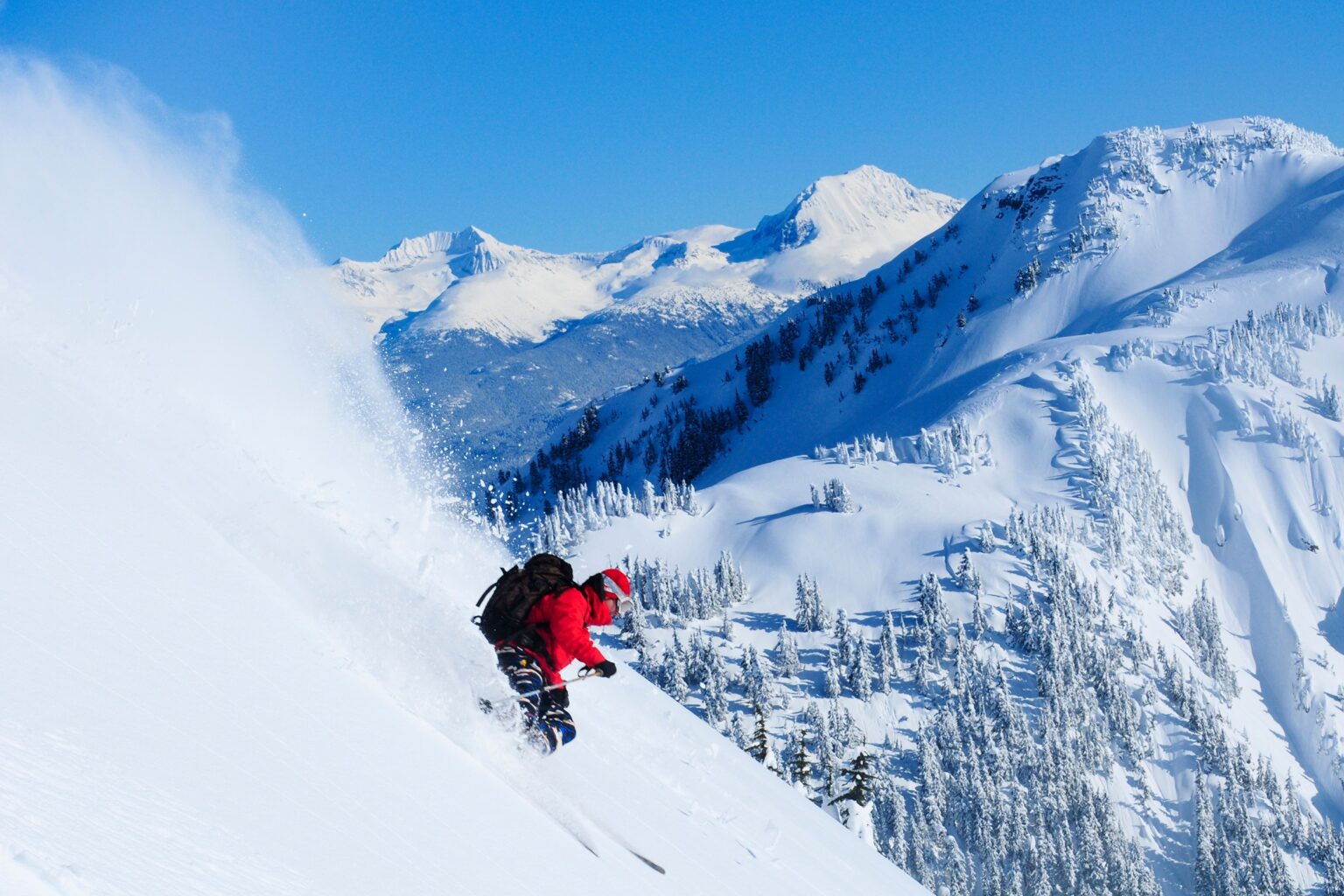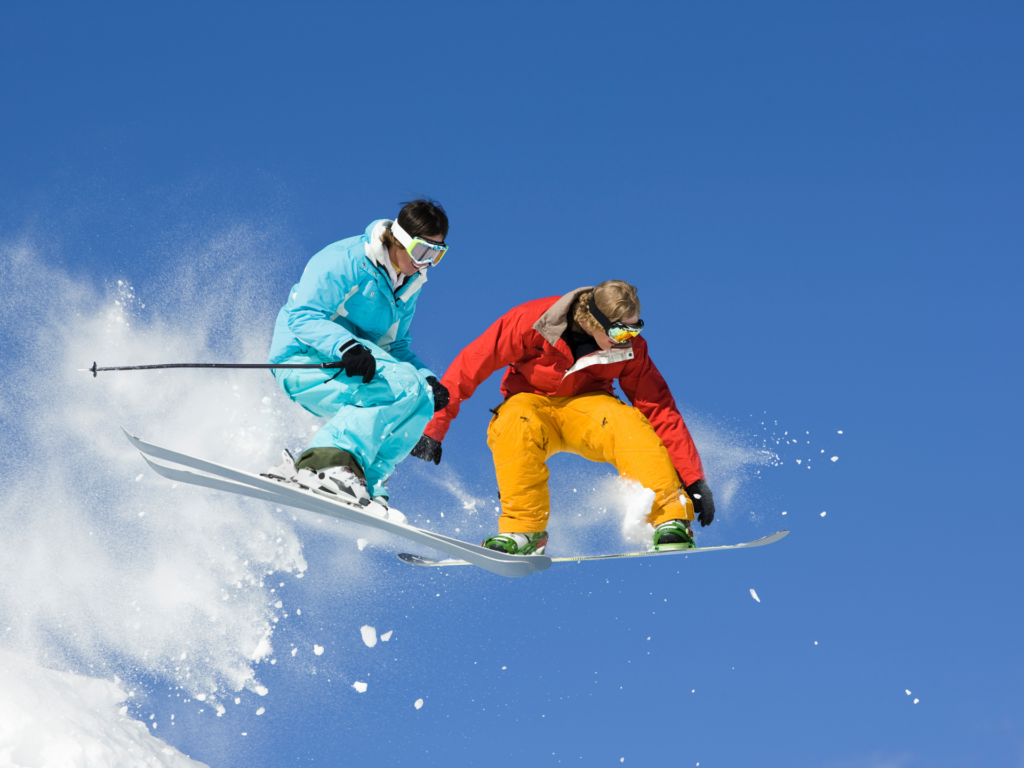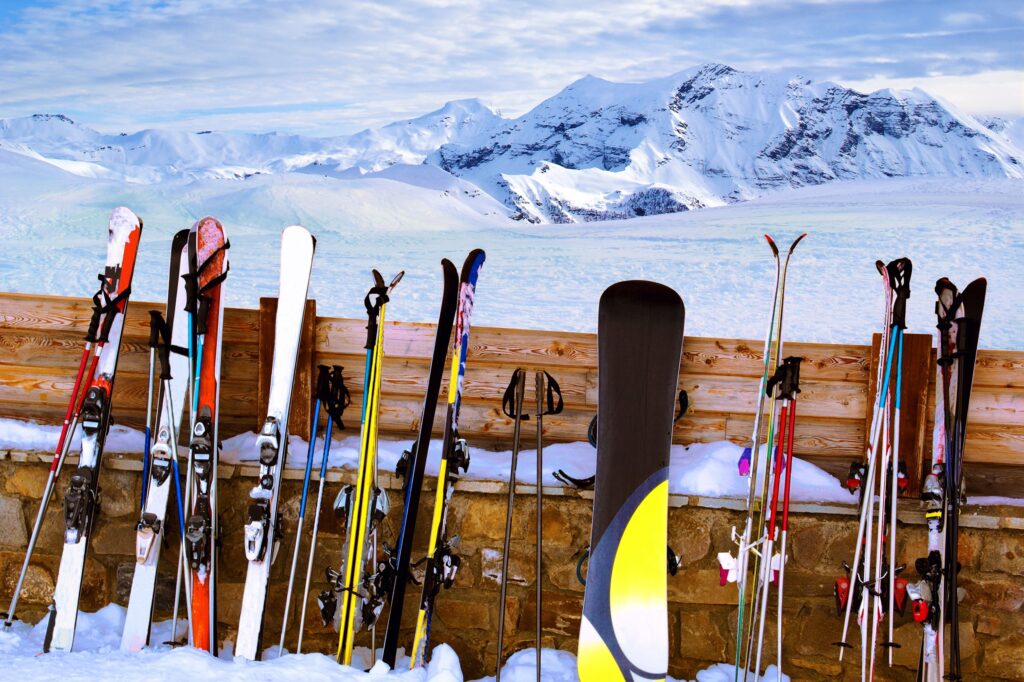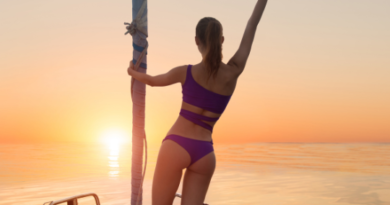Skiing vs. Snowboarding: Which is Better?
Skiing or snowboarding: which is better? This is the question we are looking for an answer to.Both sports offer thrills, adventure, and a way to experience the mountains, but they come with distinct differences in style, technique, gear, and accessibility. While some people enjoy skiing’s versatility, others prefer snowboarding’s fluid and freestyle nature. This article delves into the pros and cons of skiing and snowboarding to help you decide which sport might be better for you.


Table of Contents
ToggleLearning Curve
One of the main factors that people consider when choosing between skiing and snowboarding is how difficult it is to learn each sport.
- Skiing: Generally considered easier for beginners, skiing tends to have a gentler learning curve. With skis on each foot, beginners can adopt a “pizza” or wedge stance to control speed and balance. This stance is intuitive and helps beginners stay upright more easily. The independent leg movement and familiar stance—facing forward—make it easier for people to feel comfortable on skis quickly.
- Snowboarding: Learning to snowboard can be challenging at first, as both feet are strapped to a single board. This means beginners need to master balancing and weight distribution more precisely. The initial phase of learning snowboarding usually involves a lot of falling, which can be discouraging. However, once the basics are mastered, many snowboarders find that progression comes quickly, and more advanced skills can be learned faster than with skiing.
If you want an easier start and quicker gratification, skiing may be the better choice. If you’re okay with a steep initial learning curve in exchange for rapid skill advancement later, snowboarding is worth the effort.
Control and Maneuverability
Control and maneuverability are important for navigating various terrains on the slopes.

- Skiing: Skiers have an advantage when it comes to maneuverability. The separate skis allow for independent leg movement, which makes it easier to navigate narrow trails, moguls, and trees. Skiers can also easily adjust to changing snow conditions and have more control over their speed.
- Snowboarding: While snowboarders can ride in a more fluid and freestyle manner, controlling the board at slow speeds or on flat terrain can be tricky. Snowboarders must shift their weight from heel to toe to turn, which can be challenging on tight trails or when precision is needed. Traversing flat areas is also more difficult for snowboarders, as they cannot easily push forward like skiers.
Skiing offers greater control and maneuverability in various terrains, making it ideal for those who value versatility. However, snowboarding’s flowing style can be appealing for those who enjoy a different kind of movement.
Terrain and Snow Conditions
The type of terrain and snow conditions you prefer can also influence which sport is better suited for you.

- Skiing: Skiers can handle different snow conditions more effectively due to the design of the equipment. Whether it’s groomed runs, powder, or icy slopes, skiers have the ability to adjust their stance and technique to maintain control. Skiing is also more suitable for narrow trails and steep chutes, where precision is essential.
- Snowboarding: Snowboarding shines in soft, powdery snow, where the wide board allows riders to “float” on top of the snow more easily than skiers. However, hard-packed or icy conditions can be more challenging for snowboarders, as edge control is less precise compared to skiing.
If you plan to ride in a variety of snow conditions, skiing is generally the better option. For powder enthusiasts who seek the thrill of floating on deep snow, snowboarding is the clear winner.
Comfort and Gear
The comfort of the gear and ease of use are important factors, especially for beginners.

- Skiing: Ski boots can be quite stiff and uncomfortable, especially when walking around the resort. However, ski poles can help with balance and navigating flat terrain. The process of putting on and taking off skis can be time-consuming, particularly in deep snow.
- Snowboarding: Snowboard boots are softer and more comfortable than ski boots, making them easier to walk in. Snowboarders don’t have to worry about poles, which simplifies the gear. However, snowboarders often have to unstrap and restrap bindings when getting on and off lifts or when moving around flat areas.
Snowboarding gear tends to be more comfortable and user-friendly, while skiing requires more adjustments. If comfort is a top priority, snowboarding may have the edge here.
Risk of Injury
When it comes to safety, both sports come with their own risks and common types of injuries.

- Skiing: Skiers are more prone to injuries involving the knees, such as ligament tears, due to the twisting motion that can occur during falls or sharp turns. The separate skis also increase the risk of leg injuries when catching an edge or falling awkwardly.
- Snowboarding: The most common injuries in snowboarding are wrist fractures, shoulder dislocations, and concussions. Since snowboarders fall more often, especially in the learning phase, upper body injuries are more prevalent. Wearing protective gear like wrist guards and helmets can significantly reduce these risks.
The risks differ between skiing and snowboarding, but both sports can be safe if you take the necessary precautions. Wearing the appropriate protective gear, such as helmets, wrist guards, and knee braces, is essential for minimizing injury.
Freestyle and Tricks
For those interested in freestyle riding, tricks, and terrain parks, the choice between skiing and snowboarding can be influenced by the style of tricks they want to perform.
- Skiing: Freestyle skiing involves jumps, spins, and tricks that incorporate both skis, and skiers can ride backward (switch) to execute certain maneuvers. Skiers can take advantage of different park features, such as rails and halfpipes, in a way that incorporates their unique style.
- Snowboarding: Snowboarding is often associated with freestyle riding, as the board’s shape and the sideways stance lend themselves well to tricks, spins, and jumps. Snowboarders can perform a variety of aerial tricks, slides, and grabs, making the sport a popular choice in terrain parks.
If you’re drawn to a more fluid and freestyle approach, snowboarding might be more appealing. However, freestyle skiing offers plenty of opportunities for tricks and creative riding..
Social Scene and Culture
The social aspects and cultural differences between skiing and snowboarding communities may also influence your decision.
- Skiing: Skiing has a long history and is often seen as a traditional winter sport. This has led to a culture that includes a mix of young riders and older, more experienced skiers. The sport’s roots in alpine traditions may appeal to those who enjoy the heritage and prestige associated with skiing.
- Snowboarding: Snowboarding has a more youthful and counter-culture vibe. It became popular in the 1980s and 90s as an alternative to skiing, attracting a younger demographic. The snowboarding community is often more relaxed and associated with skateboarding or surfing cultures, making it appealing to those who prefer a less traditional environment.
If you’re looking for a more traditional experience with a broad age range, skiing may be the better fit. If you’re drawn to a younger, more laid-back scene, snowboarding might be your style.
Conclusion
Skiing vs. Snowboarding: Which is Better? Ultimately, whether skiing or snowboarding is “better” comes down to personal preferences, goals, and individual experiences on the mountain. Skiing is great for those who seek versatility, easier maneuverability, and a faster learning curve. Snowboarding, on the other hand, may appeal to those who enjoy freestyle riding, a youthful culture, and a challenge that rewards perseverance.
If possible, try both sports and see which one feels more natural and enjoyable for you. Whichever you choose, both skiing and snowboarding offer unique experiences that can bring a lifetime of winter adventure.




